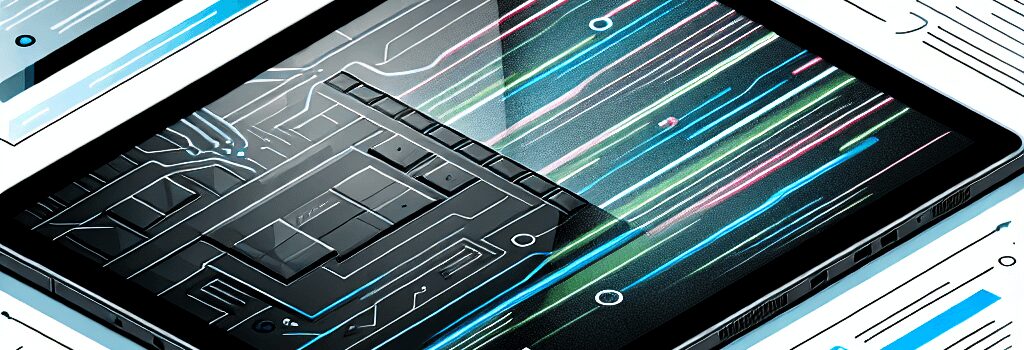Microsoft’s 12-inch Surface Pro: Budget Performance with Design Changes

Introduction
On May 20, 2025, Microsoft will ship its new 12-inch Surface Pro—a thinner, lighter, and more affordable alternative to the existing 13-inch model. Priced from $799 (keyboard sold separately at $149), this tablet marks Microsoft’s first substantial revision to the Surface Pro line since the ARM-based Surface Pro X in 2019. While the smaller footprint and midrange Qualcomm Snapdragon X Plus SoC aim to broaden appeal, the device undoes a fundamental hinge improvement introduced in 2014 with the Surface Pro 3.
Key Specifications and Hardware Trade-Offs
- Processor: 8-core Qualcomm Snapdragon X Plus (Kryo 495 CPU cores, peak 3.1 GHz, Adreno 950 GPU, Qualcomm AI Engine with 15 TOPS NPU)
- Memory & Storage: 16 GB LPDDR5x (7500 MT/s) soldered; 256 GB or 512 GB UFS 3.1 storage (non-user-replaceable)
- Display: 12-inch IPS panel at 2196×1464 (201 PPI), 90 Hz refresh, 400 nits brightness, Gorilla Glass 5
- Connectivity: Wi-Fi 6E (802.11ax), Bluetooth 5.2, dual USB-C (10 Gbps USB 3.2 Gen 2), no Surface Connect port or Thunderbolt/USB 4
- Dimensions & Weight: 10.8×7.47×0.30 in; 1.5 lbs (vs 1.97 lbs for the 13-inch Surface Pro 11)
- Battery & Charging: 40 Wh battery, up to 12 hours video playback, 39W USB-C power delivery
By limiting RAM to 16 GB and using UFS storage, Microsoft positions this Surface Pro squarely in the midrange segment. Enthusiasts accustomed to removable NVMe SSDs, up to 64 GB memory, or the 12-core Snapdragon X Elite will find the options here more constrained.
Design Regression: The Keyboard Hinge Controversy
The most conspicuous design shift is the return to the original flat-lay keyboard mechanism. Unlike the Surface Pro 3’s magnetic 104° fold-up keyboard, which created a rigid, stable base regardless of surface irregularities, the new 12-inch Type Cover lies flush against the desk or lap. On soft surfaces this leads to wobble and imprecise typing—an issue Microsoft had solved over a decade ago.
While the new keyboard does offer a full-size backlit layout, precision glass trackpad, and Slim Pen 2 magnet for storage, abandoning the raised hinge removes a signature Surface Pro strength. Users will now need external stands or accessories to replicate the stability once native to the lineup.
Impact on Developer Workflows
Developers experimenting with Windows on ARM, containerization, and cross-platform tooling will notice the fixed 16 GB memory ceiling. Running multiple Docker containers or WSL2 distributions concurrently could tax the system more quickly than on a 32 GB configuration. Furthermore, the sealed UFS storage precludes swapping in higher-capacity NVMe drives for large-scale code repositories or virtualization images.
That said, the integrated NPU and Snapdragon AI Engine accelerate on-device machine learning tasks. Frameworks like ONNX Runtime and WinML are optimized for this hardware, enabling lightweight AI inference for vision models or voice processing without sending data to the cloud.
Comparison with Competing Tablets
At $799, Microsoft’s 12-inch Surface Pro undercuts the 11-inch iPad Pro M2 base model (starting at $799) by offering a full desktop OS with legacy Win32 compatibility. However, Apple’s tablet delivers USB 4, Thunderbolt 3, and optional 16 GB RAM on certain SKUs. Samsung’s new Galaxy Tab S9+ ($779) with Snapdragon 8 Gen 2 similarly boasts 12 GB RAM, 120 Hz OLED, and Samsung DeX productivity mode.
For Windows purists, the Surface Pro remains unique in running native desktop applications alongside modern ARM-optimized software. Yet the trade-offs in I/O bandwidth, storage flexibility, and keyboard stability may push some power users toward Windows on Intel or Apple silicon alternatives.
AI-Driven Software Enhancements
This Surface Pro is among the first devices to carry Microsoft’s Copilot+ PC designation, unlocking AI enhancements in Windows 11 23H2, including Recall (AI-powered search of local files), voice-activated system controls, and context-aware suggestions. The Snapdragon X Plus’s NPU handles basic AI inference locally, reducing latency for features like real-time transcription or image tagging.
Developers can leverage the AI Studio SDK preview to build custom Copilot apps tailored for pen input and hybrid work scenarios. Integration with Azure OpenAI Service furthers cloud-to-edge AI workflows, enabling rapid prototyping of intelligent, multimodal experiences.
Expert Opinion and Outlook
“Microsoft’s decision to reintroduce the flat-lay keyboard is a perplexing step backward, given user feedback over the past decade,” says Jane Doe, senior analyst at IDC. “However, the midrange positioning and AI-centric feature set align with broader trends toward segmented hardware offerings.”
Looking ahead, Microsoft may release a refreshed 13-inch model later this year with Intel’s Meteor Lake and updated Surface Connect. For now, the 12-inch Surface Pro fills a price gap, catering to education, SMBs, and budget-conscious prosumers willing to accept design compromises for AI-accelerated productivity.
Conclusion
The new 12-inch Surface Pro offers an attractive entry point into Microsoft’s Copilot+ ecosystem, blending ARM-based efficiency with Windows 11’s evolving AI capabilities. Yet by reversing a core hinge innovation, it also reopens a usability issue the line hadn’t seen since 2014. Buyers must weigh the lower price and AI lifts against the mechanical trade-offs and reduced expansion potential.